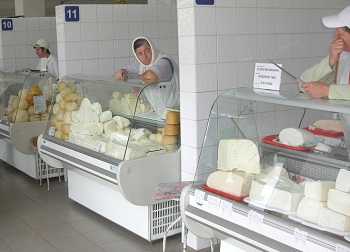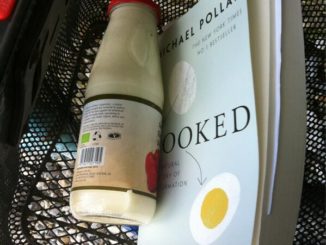What is it about Romania? Why can its Government not identify what needs doing? Is it too easily distracted? A case in point is the milk-producing industry, a sector of the economy that provides Romanians with a fundamental part of their diet. Just how many people are aware that since EU entry, the dairy cow numbers have fallen by one-third? Just how many people know that of the milk produced in Romania, less than 20 percent actually passes into the hands of milk processors and, hence, the majority is unavailable to urban consumers?

Has the consumer noticed that fresh milk is coming from Poland and UHT milk from the Czech Republic? Yogurts and cheeses from Germany, the list goes on. It is not that there is not a modernized milk-processing industry in Romania. The problem is that whilst the processing has been upgraded, the milk production sector that supplies it is still largely the highly-fragmented industry that devolved out of the communist era.
The milk price for the many small-scale cow farmers remains low. Hygiene-quality is one issue (when joining the EU many milk-producers were not ready and able to meet the milk-hygiene standards required of all EU producers, with deadlines to comply continuously being pushed back), the cost of milk collection from the many small producers another. In a competitive industry where milk can be sourced from the EU by the 25,000 liter tanker full, where dairy product ingredients can be imported in bulk and where the finished product can also be more conveniently imported, the incentive to organize the purchase and collection of milk from the small Romanian producer continues to decline. The processors, after all, are not social businesses.
More than ten years ago the SAPARD grant program to distribute EU accession preparation grants was being prepared. In its original format it had a strong focus on helping the evolution of the small and medium-sized dairy farms. Its over-complicated application procedures did, however, make the grant program inaccessible to these target recipients.
The EU funds have therefore gone elsewhere. They have not gone towards helping the milk production sector evolve. As a direct consequence, Romania will continue to be reliant on imports even though upland Romania is well-suited to milk production. Why has this been allowed to happen? Is it because the Government was not watching?
Milk production should be the back-bone of the upland Romanian economy. Yet it is not, because of a failure to recognize its importance from both economic and food-security perspectives. The domestic production of milk should be a first priority for the agricultural governance of Romania, cereals for export a secondary objective. If the Government considers that it is appropriate to ask the EU for funds to rehabilitate irrigation, a fair enough objective in itself, maybe it would also like to ask the EU to find ways to provide a new and accessible grant support system to help its smaller milk producers evolve into a competitive and viable milk-production industry. If it does not, just how does it propose to ensure the milk supply to the population of Romania?
Taken from original article by Stuart Meikle




